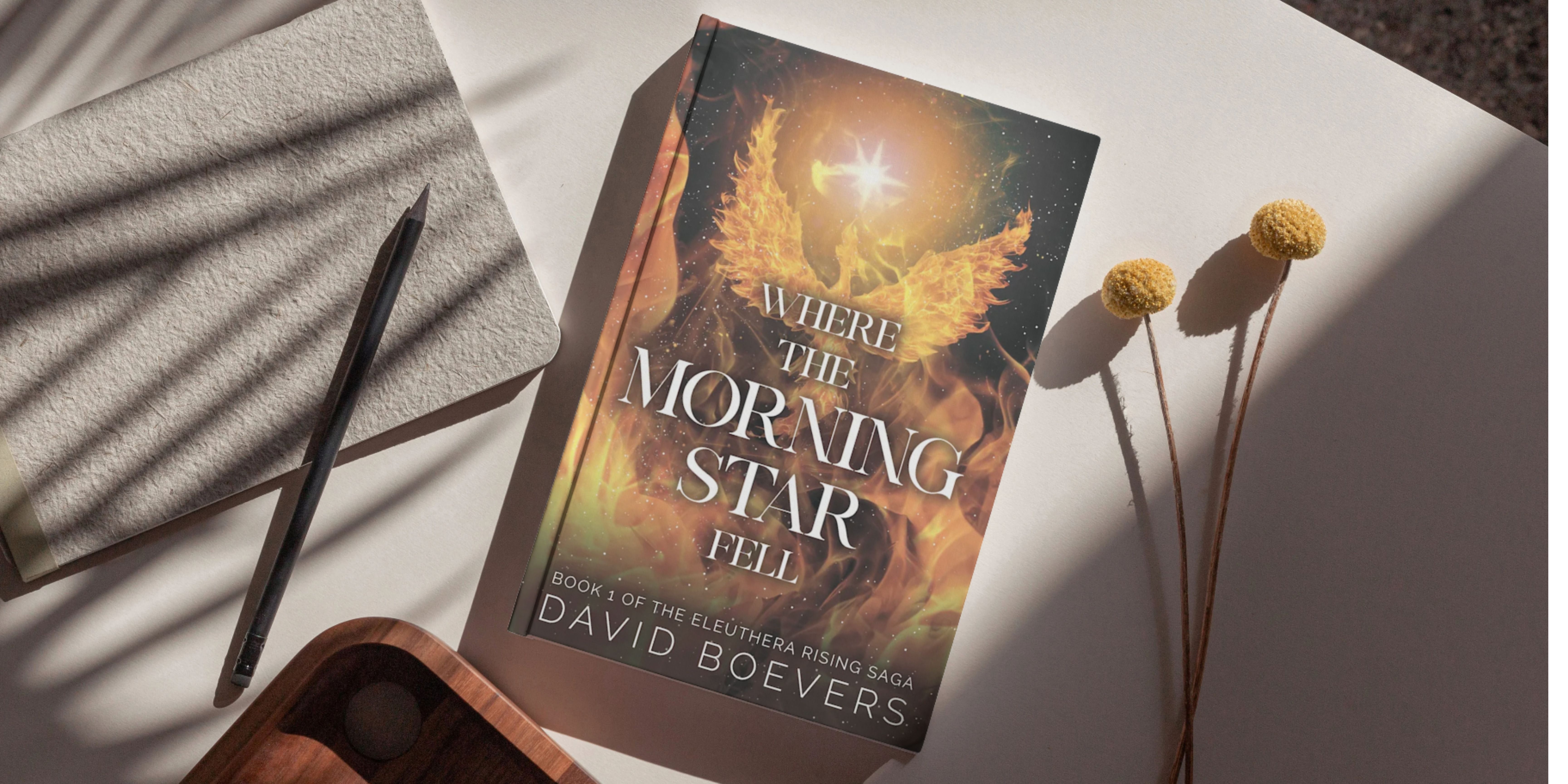Story Stream: A Journey in Deep Narrative Understanding

Context
My name is Will Frasier. I'm the Founder of Story Stream. I'm a writer working on a thriller that explores the complex topic of gun violence in Mexico and how corruption can be the result of an internal feeling of being lost. Like many writers, I've spent countless hours wondering why my work doesn't sound like my heroes'. I have studied many passages of literature to learn the craft of writing compelling characters and storylines, dissecting some of my beloved novels, attempting to reverse-engineer what makes them work, and feeling frustrated when my own writing falls short. When ChatGPT emerged, I did what every curious writer did: I fed it my manuscript. The results were predictably shallow and grammatically correct, but they were missing the soul of storytelling.
But this experiment sparked a different question. Through my work in emotion detection and AI psychology, I began to see possibilities beyond simple text generation. What if, instead of trying to write stories, AI could help us understand how they work?
Modern AI is an astonishing achievement of math and engineering. But can it help writers? Can reasoning LLMs function as effectively as human editors? What is editing? How does one assess a novel? Is assessing a novel purely mechanical or is there an unknowable human element to it?
The Complex Nature of Stories
Stories are complex systems that operate on multiple levels simultaneously. At their core, they're about characters with agency making choices that have consequences. These choices create narrative arcs that build and release tension while revealing character through action. But stories are also about emotional resonance—the ability to make readers feel something through vicarious experience and empathetic connections. Through moral choices that challenge both characters and readers, stories create an emotional resonance that transcends mere plot mechanics.
The technical craft of storytelling is equally intricate. It demands mastery of pacing that breathes with the story's emotional beats, dialogue that reveals character while advancing plot, and point of view choices that determine what information readers receive and when. Scene construction requires balancing action, description, and interiority to maintain momentum while deepening the narrative. Voice and style aren't merely technical choices, they're the fingerprints that make each work unique.
Cultural dimensions add another layer of complexity. Writers must navigate genre expectations while finding fresh approaches that surprise and delight readers. They must consider cultural context and sensitivity, ensuring their work respects diverse perspectives while remaining true to their artistic vision. World-building requires creating coherent systems that feel authentic and lived-in, whether the setting is contemporary or fantastical. Whether dealing with technology or magic, economic systems or political frameworks, the world must support and enhance the story's themes and conflicts.
Thematic depth emerges from this foundation. Core themes develop through symbolic patterns and motifs, recurrences that build meaning across the narrative. Subtext operates beneath the surface, creating resonance between what is said and what is meant. Character arcs trace meaningful change (or meaningful resistance to change) that illuminates the story's central questions. The structure of revelation, the patterns of tension and conflict, and the satisfaction of resolution all contribute to the reader's journey.
Reader engagement depends on this complex interplay of elements. Emotional investment builds through carefully calibrated stakes and meaningful character choices. Intellectual engagement comes from puzzles, mysteries, and questions that invite readers to participate in making meaning. The balance of familiarity and novelty creates a sense of both comfort and discovery. And beneath it all, the fundamental human desire for story—to make sense of experience through narrative—drives the connection between writer and reader. This is the territory that editors navigate: assessing how well a story works at multiple levels simultaneously, from the mechanics of grammar to the mysteries of resonance, assessing technical craft at multiple levels, always balancing preservation of voice with clarity of communication.
The challenge isn't just the breadth of knowledge required, it's understanding how all these elements interact. A change to pacing affects emotional impact. A shift in point of view alters what information is available to readers. A modification to world-building may create ripple effects throughout the narrative. Good editing requires seeing both the forest and the trees, understanding the writer's intentions, and finding ways to strengthen the work without imposing external visions. It's about helping writers see their own work more clearly, identifying both strengths and weaknesses, allowing them to make more informed decisions about their work while maintaining their unique artistic vision.
The Art and Science of Editing
Editing is both art and science, intuition and analysis. It requires deep reading that engages with a text on multiple levels simultaneously, from the mechanics of grammar to the mysteries of resonance. Good editors develop a dual consciousness—reading both as a first-time audience member and as a critical analyst, experiencing the story while also examining how it works. They must balance preservation of voice with clarity of communication, respecting the writer's unique expression while ensuring readers can access the story without unnecessary obstacles.
Traditional editing approaches this challenge through years of experience, developing pattern recognition that allows editors to quickly identify both strengths and weaknesses in a manuscript. They learn to recognize common pitfalls and effective techniques, to spot inconsistencies and missed opportunities. But this expertise is often tacit rather than explicit—editors know what works and what doesn't, but may struggle to articulate precisely why. Their feedback combines specific technical advice with broader insights about story structure, character development, and thematic coherence.
This raises fascinating questions about the nature of literary understanding. What makes a story "work"? How do we recognize effective characterization or compelling dialogue? What patterns of tension and release create emotional engagement? These questions have been explored by literary theorists, cognitive scientists, and practicing writers and editors for generations, but definitive answers remain elusive. The art of storytelling evolves constantly, with new forms and techniques emerging in response to changing cultural contexts.
At Story Stream, we're exploring whether AI can contribute meaningfully to this conversation. Not by replacing human judgment, but by offering new perspectives and analytical tools that complement traditional approaches. We're investigating whether computational analysis can help make explicit some of the patterns and structures that experienced editors recognize intuitively, providing writers with additional insights into their own work. Our goal isn't to automate editing, but to enhance it—to create tools that support both writers and editors in the complex task of shaping stories that resonate.
Questions That Drive Us
Our work at Story Stream is driven by a series of interconnected questions about stories, readers, and the mysterious alchemy that happens when they meet:
- Can we develop computational models that capture meaningful aspects of narrative structure and function?
- How do different elements of storytelling— character, plot, setting, theme—interact to create coherent and engaging experiences?
- What patterns distinguish effective stories from less effective ones within particular genres or traditions?
- How do readers construct meaning from text, and how can writers support that process?
- What makes characters feel authentic and compelling? How do readers form emotional connections with fictional entities?
- How do stories create and manipulate tension, curiosity, and surprise to maintain reader engagement?
- What role do cultural contexts and reader expectations play in how stories are received and interpreted?
These aren't simple questions with definitive answers. They're areas of exploration that invite ongoing investigation and discussion. By combining insights from literary theory, cognitive science, and computational analysis, we hope to develop new perspectives on these age-old questions about the nature of storytelling.
The Technical Foundation
Our approach combines several technical strategies to analyze and understand narrative texts:
First, we're developing specialized language models trained specifically on narrative analysis. These models learn to recognize patterns in how stories work—from character development and plot structure to thematic coherence and emotional arcs. By fine-tuning these models on diverse examples of both published literature and works-in-progress, we're creating systems that can identify common patterns and potential areas for development in manuscripts.
Second, we're building structured analytical frameworks that break down the complex task of narrative assessment into more manageable components. These frameworks examine specific aspects of storytelling—character consistency, plot coherence, pacing, dialogue effectiveness, and more—providing targeted feedback on each dimension. This structured approach helps writers identify specific areas where their work is strongest and where it might benefit from further development.
Third, we're creating visualization tools that make narrative patterns more accessible and intuitive. These visualizations map emotional arcs, character relationships, plot developments, and thematic elements, allowing writers to see their work from new perspectives. By making implicit structures explicit, these tools help writers gain distance from their work and see it with fresh eyes.
Fourth, we're developing comparative analysis systems that can identify similarities and differences between a manuscript and relevant published works. These systems help writers understand how their work relates to existing traditions and conventions, identifying both where they're following established patterns and where they're breaking new ground. This contextual understanding helps writers make more informed decisions about their creative choices.
Perhaps most ambitiously, we're developing agentic AI systems that attempt to simulate reader response and engagement. These systems don't just analyze text, they model the experience of reading, tracking how tension builds and releases, how information is revealed and understood, how emotional connections form and develop. While we're under no illusion that these models fully capture the complexity of human reading experience, they offer valuable insights into how stories work and why they affect us as they do.
An Invitation
Your voice matters! Apply to join our beta testing community and get a sneak peek at what's coming next. Participation is limited, and selection is based on various factors, but every application is appreciated.
We're looking for writers who share our curiosity about these questions. Writers who want to:
- Understand your own work more deeply
- Explore the mechanics of storytelling
- Challenge assumptions about what makes stories work
- Help shape the future of AI-assisted literary analysis
If you're curious about these questions too, we'd love to have you join our beta program. We're looking for writers who want to explore these ideas with us, who can help us understand what's useful and what isn't.
More from the Blog

Interview with David Boevers, Author of Where the Morning Star Fell
Sci-fi author and educator David Boevers shares how Story Stream helps him revise with precision, purpose, and limited writing time. Discover his process, his Eleuthera universe, and how the Chapter Analyzer keeps his revisions on track.

7 Myths About First Drafts That Are Holding You Back
Let go of perfectionism and embrace the messy truth of first drafts. Discover the 7 common myths that keep writers stuck—and the truths that set you free to create boldly, imperfectly, and authentically.

Meet Jessica James: A Story Stream Success Story
Award-winning author Jessica James shares how Story Stream helped her deepen a dual-era historical mystery, uncover fresh ideas, and return to her creative rhythm.

Tension to Twist: Writing Thrillers That Stay With Readers
Build suspense that lingers after the last page with tension, atmosphere, and grounded stakes your readers can feel.

The Shadow That Shapes the Light: Writing Unforgettable Villains
From archetypes to emotional stakes, explore how to craft villains who pressure protagonists, deepen theme, and keep readers turning pages.

From Meet-Cutes to Magic: Crafting HEAs That Truly Land
A practical guide to crafting romance that earns its HEA, balancing authentic chemistry, meaningful conflict, and a satisfying payoff—plus how Story Stream helps you get there.